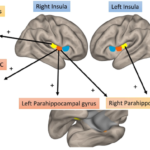CHICAGO—As part of a scientific session of ACR Convergence 2025 on Sunday, Oct. 26, Alexis Ogdie, MD, associate professor of medicine and director of the University of Pennsylvania Psoriatic Arthritis and Spondyloarthritis Program, Philadelphia, discussed new and forthcoming treatments for psoriatic arthritis. “We have lots of therapies and lots of new therapy options,” said Dr. Ogdie. “Part of what we need to do is figure out how to best use them.”
Treatment Landscape
Approach to treatment of psoriatic arthritis has evolved significantly over the past 15 years. Disease heterogeneity, difficult-to-treat patients and the introduction of new agents have all made it more challenging to create clinical guidelines.1-3
The current guideline from the Group for Research and Assessment of Psoriasis and Psoriatic Arthritis (GRAPPA), which Dr. Ogdie recommended as a helpful resource, uses a symptom domain approach (e.g., primary axial disease vs. enthesitis vs. peripheral arthritis) paired with comorbidity considerations to aid in treatment decisions.2
Based on these considerations, clinicians can now work with patients to choose from several different classes of treatment, with a recent addition and some others that may soon become options (see Table).
IL-17 Inhibitors
For almost a decade, clinicians have been able to prescribe therapies based on interleukin (IL) 17 inhibition, with the approval of the U.S. Food & Drug Administration (FDA) of secukinumab for psoriatic arthritis followed by the approval of ixekizumab. Both these agents inhibit a specific version of cytokine IL-17, IL-17A. A similar therapy, brodalumab, works slightly differently as an IL-17 receptor blocker, but it is currently approved only for psoriasis and not for psoriatic arthritis.
In September 2024, the FDA approved a new member of this class for psoriatic arthritis, bimekizumab, a humanized monoclonal IgG1 antibody that binds to and inhibits both IL-17A and IL-17F. IL-17A and IL-17F share some overlapping inflammatory properties, but IL-17F is more elevated in psoriatic issues. Although comparative studies in psoriatic arthritis are not available, bimekizumab may provide more effective skin clearance compared with earlier IL-17 agents.4
Dr. Ogdie shared results from two phase 3 trials that demonstrated bimekizumab’s efficacy and safety in both treatment-naïve patients and in those poorly responding to anti-tumor necrosis factor (TNF) agents. Dr. Ogdie noted that psoriatic arthritis treatment response was comparable in bimekizumab and adalimumab. Skin response scores were noticeably better in the bimekizumab group, consistent with earlier work demonstrating the superiority of this class of agents in skin symptoms over anti-TNF therapies.5,6
Researchers initially hoped that bimekizumab’s dual IL-17A/IL-17F blocking might pose less risk of inflammatory bowel disease than earlier anti-IL-17 therapies. Dr. Ogdie pointed out, however, that this has not been borne out, so clinicians must counsel patients on these risks; this entire class should be avoided in patients with preexisting inflammatory bowel disease. Dr. Ogdie also noted that bimekizumab may pose a higher risk of candida infection compared with other anti-IL-17 agents, particularly when given at the higher dosage recommended for psoriasis vs. psoriatic arthritis.5,6
Bimekizumab also contains a warning for suicidal ideation, although Dr. Ogdie noted that this was more prevalent in patients treated for psoriasis than for psoriatic arthritis. “It’s something to be aware of,” she said. “For all patients, ask about depression and anxiety at every visit.”
Researchers have also been exploring whether innovations in biologic size might improve response. At around 150 kilodalton (kDa) in size, current therapeutic biologic antibodies may not fully penetrate tissues.
Thus, sonelokimab is a novel nanoparticle agent (40 kDa) displaying dual inhibition of IL-17A and IL-17F. Dr. Ogdie shared that phase 2 trials in psoriatic arthritis showed similar efficacy and safety profile to what might be expected from an IL-17 inhibitor, but the current phase 3 study will yield more definitive information.7
Similarly, izokibep is an even smaller (14 kDa) particle designed to inhibit IL-17A with greater tissue penetration than current anti-IL-17 agents. Previous data and a phase 2b/3 study presented on Tuesday at ACR Convergence show the durability of response at 52 weeks, with a safety profile similar to previous anti-IL-17 therapies.8,9 “For all practical purposes it looks [like] secukinumab or ixekizumab,” said Dr. Ogdie.
New IL-23 Inhibitors
Two subcutaneous IL-23 inhibitors came on the market within the last five years: guselkumab followed by risankizumab. Another subcutaneous agent in this class, tildrakizumab, is currently approved for psoriasis, and like these previous agents also targets the p19 subunit of interleukin-23. Although the full results have not yet been released, the developer, Sun Pharma, has announced two positive phase 3 trials in psoriatic arthritis (INSPIRE-1 and INSPIRE-2), which may be presented at the next EULAR Congress.10,11
Dr. Ogdie noted that anti-IL-23 agents are known for their clean safety profile, and, so far, tildrakizumab looks very similar to other anti-IL-23 agents in this respect; however, its skin response, although good, might not be quite as effective as those seen in earlier therapies in this class.10,11
Tildrakizumab has already been FDA approved for psoriasis. Patients typically receive it in-office as a once-every-12-week injection, which Dr. Ogdie noted is often helpful for medication access in Medicare patients.
In contrast, icotrokinra is an oral IL-23 receptor antagonist peptide presently under development for plaque psoriasis.12 Dr. Ogdie noted that it appears to be effective for skin manifestations, like other anti-IL-23 agents. Some early findings presented at ACR Convergence 2025 have shown promise in subsets of psoriasis patients who also have psoriatic arthritis, so further research exploration in psoriatic arthritis is expected.13
Tyrosine Kinase 2 Inhibitors
Tyrosine kinase 2 (TYK2) is one of the Janus kinase (JAK) immune signaling enzymes. It is thought to potentially have more signaling through the IL-23 pathway compared with the other Janus kinases; moreover, TYK2 inhibitors are more selective than traditional JAK inhibitors, potentially leading to an improved safety profile.
Deucravacitinib is a novel oral TYK2 inhibitor already FDA approved for psoriasis. The positive phase 3 POETYK1 and POETYK2 trials further explored results in psoriatic arthritis, with results released at the most recent EULAR Congress. Dr. Ogdie noted that the drug might be appropriate for a similar patient subset as those currently taking oral apremilast, which causes much more nausea and diarrhea.14 “This could be a much more tolerable once-a-day oral medication for a similar population,” she said.
Zasocitinib is a similar investigational oral agent with positive results in phase 2 trials for psoriatic arthritis, but one with even greater selectivity for TYK2 inhibition.15 “We’ll have to look down the line at potential differences between the molecules,” said Dr. Ogdie.
Dr. Ogdie also commented on the increased risk of acne in these agents, which can also occur with JAK inhibitor treatment, so clinicians should check in with patients about this treatable side effect.
Overall Treatment Approach
Even with multiple biologic treatments available, and more on the horizon, only about a third of patients with psoriatic arthritis have minimal disease activity within six months of starting a biologic or targeted synthetic disease-modifying anti-rheumatic drug.7 Making real progress will probably require not just new agents but also new ways of employing them and finding the right therapies for different subsets of patients.
Although Dr. Ogdie’s talk centered on new therapies for psoriatic arthritis, she also emphasized the need to explore new treatment strategies and additional approaches to help patients feel better overall, independent of direct pharmacological interventions.
“Remember,” said Dr. Ogdie, “it’s not just about the pharmacotherapy. It’s also about making sure we’re choosing the right strategy and working to make the patient feel better, that we’re thinking about holistic management.”
Experts are currently in the process of updating psoriatic arthritis guidelines from both GRAPPA and the ACR/National Psoriasis Foundation.
Ruth Jessen Hickman, MD, a graduate of the Indiana University School of Medicine, is a medical and science writer in Bloomington, Ind.
Table: Psoriatic Arthritis Treatment Option Classes
|
Class |
Members |
Firstline for axial PsA? |
|
Oral small molecules |
methotrexate, sulfasalazine, cyclosporine, leflunomide, apremilast |
no |
|
TNF-inhibitors |
etanercept, infliximab, adalimumab, golimumab, certolizumab pegol |
yes |
|
IL-12/IL-23 inhibitor |
ustekinumab |
no |
|
IL-17 inhibitors |
secukinumab, ixekizumab, bimekizumab*, izokipeb**, sonelokumab** |
yes |
|
IL-23 inhibitors |
guselkumab, risankizumab, tildrakizumab**, icotrokinra** |
no |
|
CTLA4-Ig |
abatacept |
no |
|
Traditional JAK inhibitors |
tofacitinib, upadacitinib |
yes |
|
TYK2 inhibitors |
deucravacitinib**, zasocitinib** |
no |
Notes: * approved in 2024 for PsA; **under development for PsA
References
- Ogdie A, Coates LC, Gladman DD. Treatment guidelines in psoriatic arthritis. Rheumatology (Oxford). 2020 Mar 1;59(Suppl 1):i37–i46.
- Coates LC, Soriano ER, Corp N, et al. Group for Research and Assessment of Psoriasis and Psoriatic Arthritis (GRAPPA): Updated treatment recommendations for psoriatic arthritis 2021. Nat Rev Rheumatol. 2022 Aug;18(8):465–479.
- Singh JA, Guyatt G, Ogdie A, et al. Special article: 2018 American College of Rheumatology/National Psoriasis Foundation guideline for the treatment of psoriatic arthritis. Arthritis Rheumatol. 2019 Jan;71(1):5–32.
- Reich K, Warren RB, Lebwohl M, et al. Bimekizumab versus secukinumab in plaque psoriasis. N Engl J Med. 2021 Jul 8;385(2):142–152.
- McInnes IB, Asahina A, Coates LC, et al. Bimekizumab in patients with psoriatic arthritis, naive to biologic treatment: A randomised, double-blind, placebo-controlled, phase 3 trial (BE OPTIMAL). Lancet. 2023 Jan 7;401(10370):25–37.
- Merola JF, Landewé R, McInnes IB, et al. Bimekizumab in patients with active psoriatic arthritis and previous inadequate response or intolerance to tumour necrosis factor-α inhibitors: a randomised, double-blind, placebo-controlled, phase 3 trial (BE COMPLETE). Lancet. 2023 Jan 7;401(10370):38–48.
- McInnes IB, Coates LC, Mease PJ, et al. Sonelokimab, an IL-17A/IL-17F-inhibiting nanobody for active psoriatic arthritis: A randomized, placebo-controlled phase 2 trial. Nat Med. 2025 Oct 6. Online ahead of print.
- Taylor PC, Mease PJ, de Vlam K, et al. Efficacy and safety of izokibep in patients with active psoriatic arthritis: a randomised, double-blind, placebo-controlled, phase 2 study. Ann Rheum Dis. 2025 Apr 2:S0003-4967(25)00815-5.
- Mease P, Behrens F, Kivitz A, et al. Efficacy and safety of izokibep, a novel IL-17A inhibitor, in patients with active psoriatic arthritis: Week 52 results from a randomized, double-blind, placebo-controlled, multicenter, phase 2b/3 study [abstract LB08]. Arthritis Rheumatol. 2025;77(suppl 9).
- Mease PJ, Chohan S, Fructuoso FJG, et al. Efficacy and safety of tildrakizumab in patients with active psoriatic arthritis: Results of a randomised, double-blind, placebo-controlled, multiple-dose, 52-week phase IIb study. Ann Rheum Dis. 2021 Sep;80(9):1147–1157.
- Sun Pharma. Sun Pharma’s phase 3 clinical studies evaluating tildrakizumab 100 mg (ILUMYA®) in active psoriatic arthritis meet their primary endpoint. July 21, 2025. https://sunpharma.com/wp-content/uploads/2025/07/Press-Release-Phase-3-Clinical-Studies-PsA-ILUMYA-Topline.pdf.
- Bissonnette R, Pinter A, Ferris LK, et al. An oral interleukin-23-receptor antagonist peptide for plaque psoriasis. N Engl J Med. 2024 Feb 8;390(6):510–521.
- Mercola JF, Mease PH, Coates L. Icotrokinra (ICO), a novel targeted oral peptide, in patients (Pts) with psoriatic disease: Exploratory assessments from a phase 2 psoriasis (PsO) study informing a phase 3 clinical program in psoriatic arthritis (PsA) [abstract 0562]. Arthritis Rheumatol. 2025;77(suppl 9).
- Mease PJ, Chandran V, Armstrong AW, et al. Efficacy and safety of deucravacitinib up to week 52 from POETYK PsA-2: A multicenter, randomized, double-blind, placebo-controlled, phase 3 study in patients with psoriatic arthritis. Ann Rheum Dis. 2025 June;84(S1):84–85.
- Kivitz A, Baraliakos X, Muensterman ET, et al. Highly selective tyrosine kinase 2 inhibition with zasocitinib (TAK-279) improves outcomes in patients with active psoriatic arthritis: A randomised phase 2b study. Ann Rheum Dis. 2025 Oct;84(10):1660–1674.




